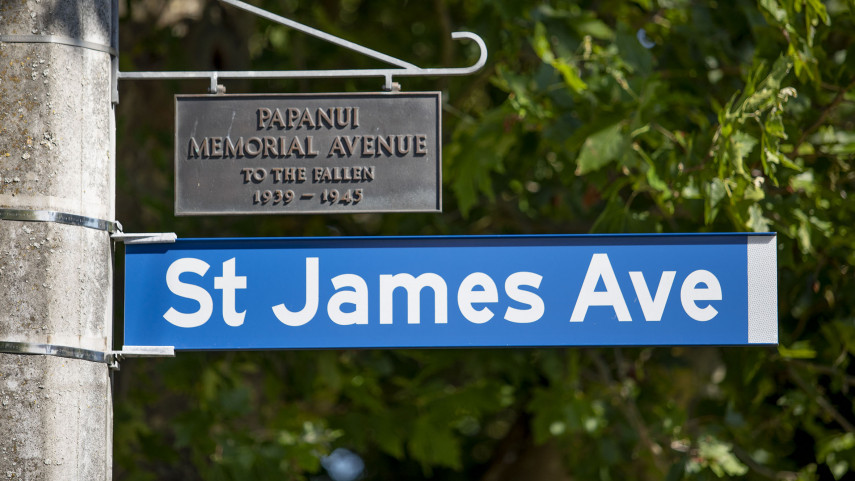
Street Talk: Marking history

Share this story
Streets provide a way for us to commemorate important events in history, through names – and in one special instance through trees.
On June 1st 1945 St James Avenue in Papanui became the first of fifteen streets in the suburb to be made into a living memorial for Cantabrians who lost their lives during WWII.
These streets were chosen because many of the residents had not returned from active service overseas.
Twenty one pairs of oaks were planted – the species chosen as it was seen to possess attributes of strength and endurance.
Acknowledgement plaques were placed at the end of every street.
Along with St James they were Hartley, Kenwyn, Lansbury, Scotston, Alpha, Claremont and Condell Avenues, Dormer, Gambia and Halton Streets and Tomes and Windermere Roads.
One of our most well-known streets also has a connection to World War II.

Memorial Ave in 1959. Car lights at the time were not very powerful hence the large number of street lights. Christchurch City Libraries: CCL PhotoCD 10, IMG0032
Memorial Avenue - officially opened in 1959 – was dedicated to air service personnel who died during World War II.
Many of those who served in the war would have trained at what was then Harewood Airport before going overseas.
At the opening, the chairman of the Burnside Road Memorial Highway Committee, William Laing, appealed to users of the avenue to think at least once as they passed along it that it was a memorial. He said the avenue of trees should be regarded as a symbol of life.
In the city’s north-east, Anzac Drive is named in honour of the Burwood and New Brighton people who served New Zealand in conflicts overseas.
While Somme Street was so named in 1920 after the 1916 battle on the Somme River during World War I.
A more recent example is the Copper Ridge Estate development which has road names themed for the service men listed on the Halswell War Memorial.
Street Talk is a series of stories exploring our city streets.
